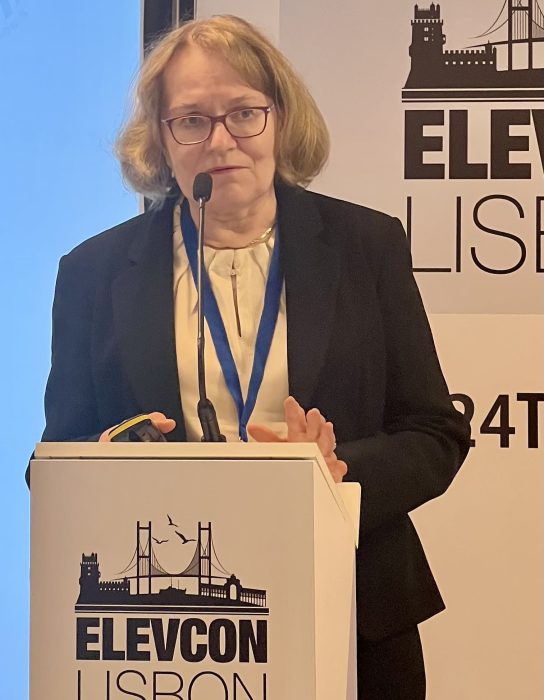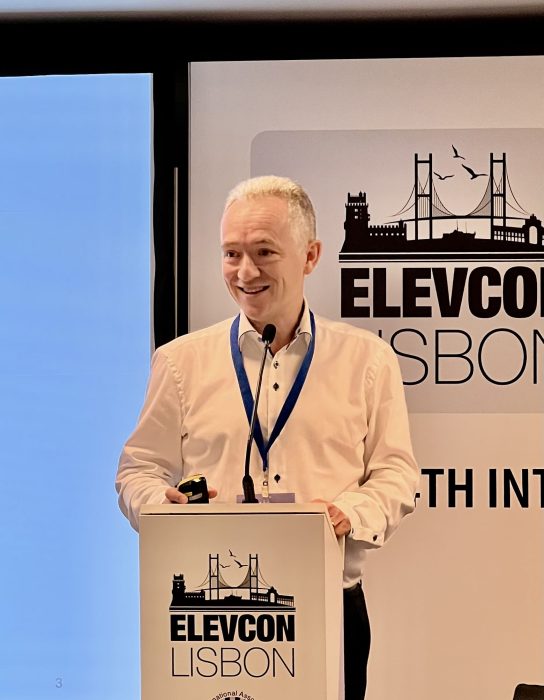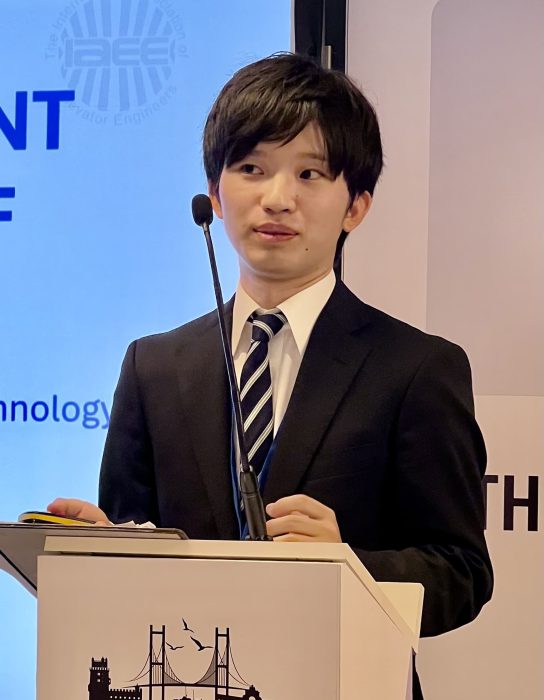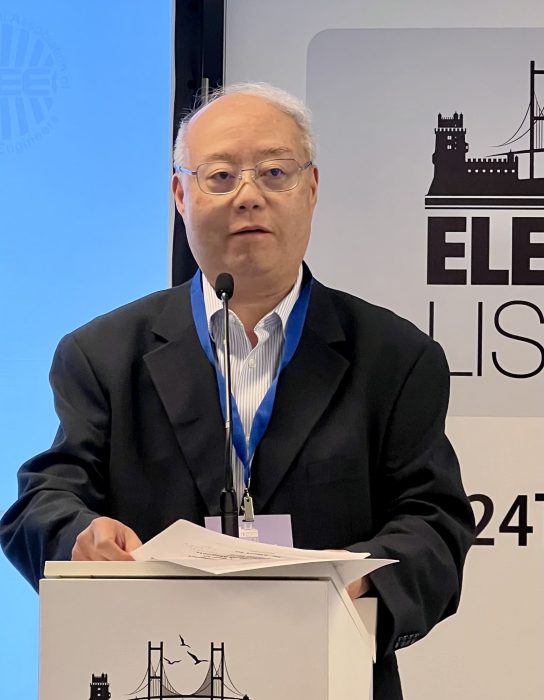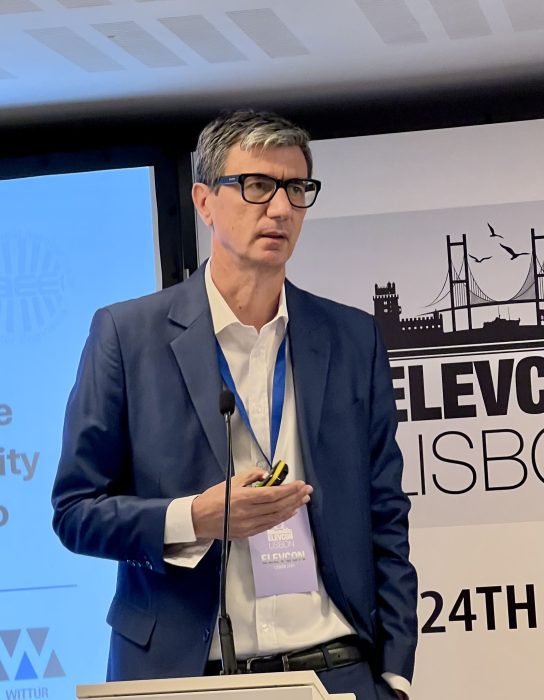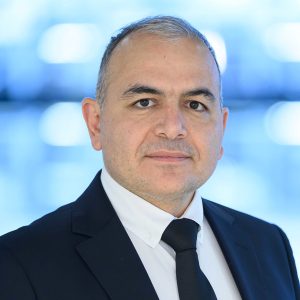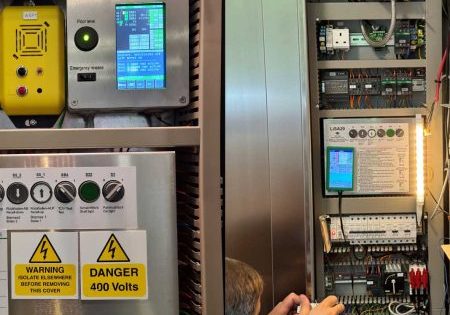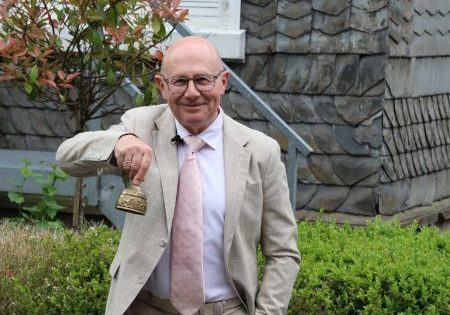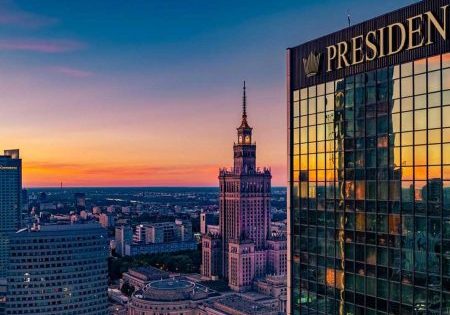One of Europe’s most colorful and oldest capitals hosts ELEVCON’s 24th edition.
Two years ago, at the ELEVCON congress in Prague, Czech Republic, participants voted for Lisbon, Portugal, as the event’s next destination. On June 17-19, guests convened in Portugal for three days of vertical-transportation (VT) education and networking.
In her opening remarks, President of International Association of Elevator Engineers (IAEE) and CEO of MLS Lift Consulting Dr. Marja-Liisa Siikonen provided detailed information about the three-day program and thanked the members who contributed to the program, including those that but could not be present in the hall. IAEE Administrative Board Charman and member of the ELEVCON Steering Committee Gil Stier talked about the history of ELEVCON and the 2025 program’s upcoming three-day schedule.
First Session
After the opening remarks, Prof. Richard Peters delivered the first presentation, “Elevating Intelligence: Addressing the Divide in the Global Elevator Market.” He started his speech with a colorful presentation of his own biography with pictures from childhood to the present day. Peters said he has presented at this podium maybe 15-17 times since 1992, so ELEVCON has an important place in his professional life. After receiving his doctorate, he devoted 30 years of work to remote access and traffic analysis in elevators, which he described, along with the distance he has traveled, using examples. Peters reminded attendees about old presentations on TK Elevator’s TWIN and MULTI elevators, which are actively used today in elevator technology, and the work done by other brands in this field previously. He illustrated the point reached today with a working video of the MULTI system. At the end of his presentation, he gave information about how his own traffic analysis program, ELEVATE, works.
Second Session
After the coffee break, the second session, “Energy Efficiency and Service Level,” started with Dr. Janne Sorsa from Finland’s Elevating Studio moderating. The first presentation was given by Klaus Wuerkner from Germany-based Serapid, who presented “Rigid Chain Technology (RCT) as an Alternative Drive Solution” with the motto, “It Starts Where Others Reach Their Limits.” He shared a sample of the chain with guests so everyone could touch the product he described.
The second presentation of the session was given by Antti Korkealaakso from KONE with the title, “Energy-Efficient Elevator Group Controller With Passenger-Driven Service Optimization.” Korkealaakso shared graphs of daily traffic simulations focused on energy efficiency and showed changes in waiting times. He explained that acceptable passenger waiting time is directly proportional to the increase in energy efficiency.
The last presentation of the afternoon was titled, “Door Sensor-Based Systems Increase Elevator Performance, Maintenance Efficiency and Customer Satisfaction” and was given by Jan Giger from Switzerland-based CEDES. Giger, who also had a booth at ELEVCON, introduced a system that detects whether the passenger can get on the elevator on foot, in a wheelchair or with a patient bed by using two-dimensional scanning of the people getting on the elevator by the door sensors at the entrance of the cabin.
Third Session
The third session after lunch was titled “Elevator Planning and Architecture in Tall Constructions” and was moderated by Peters. First, Hongliang Liang of Aliang Lift Design Studio from the U.K. gave a presentation on mixed-use double-deck elevators and single-deck elevators in office buildings. He explained the space gained by using double-deck and faster elevator applications for the minimum number of elevators in high-rise buildings with sample applications and graphics.
The second presentation was delivered by Siikonen, who explained the measures that should be taken to increase the overall efficiency of complex elevator systems, from traffic analysis to design criteria. She illustrated this on a quadruple elevator group, showing the effects of including a single-deck elevator, double-deck elevator and target control systems according to ISO 8100-32:2020 criteria.
Prof. Dr. Erdem İmrak from Türkiye then presented information about Türkiye’s registered historical elevator stock. He said the most important of these is Türkiye’s first electric elevator in Pera Palace and gave information about other historical elevators. The main subject of this presentation was the elevator in the Yacht Club in Büyükada, Istanbul, known as the Atatürk Elevator. He shared the details of the working system and safety components of this two-stop elevator with a travel distance of 27 m in a wooden construction.
The last presentation of the third session was given by Andreas Fleischmann from Digipara, titled “From Concept to Construction With ELEVATE and DigiPara Elevatorarchitec.” He explained the features of DigiPara software and Building Information Modeling (BIM) compatibility with the ELEVATE software. He also presented examples from international companies using the program. Andres Damjanow, CEO of DigiPara, took the floor at the end of the presentation and briefly shared that he is new in this sector, but he has more than 13 years of experience in BIM.

Session Four: Panel
In the first presentation of the panel, moderated by Dr. Arthur Hsui of Otis, “Standardization of Elevator Traffic Planning – How Does ISO 8100-32:2020 Match the Needs Arising From the Planning of Tall Buildings?,” Hsui said that 75% of the world’s elevator stock consists of single and dual groups operating at 1.6 m/s or less. He said ISO 8100-31 does not distinguish single-tenant office buildings where peak demands and inter-floor traffic can significantly exceed current values.
The second panelist, Peters, talked about the effects of car loading area calculations on traffic analysis. Mikko Kontturi from KONE talked about the elevator design and usage difficulties of pencil buildings — a thin and tall building type seen in cities such as NYC and Hong Kong. Siikonen shared charts of the different cabin loads achieved at different times of the day according to AWT (average weight time) and CLF (car load factor) criteria.
The main topic discussed in the panel was the calculation of car loading area within the scope of ISO 8100-32, traffic analysis and its effects on building elevator designs.
On the evening of the first day, all guests had the opportunity to meet and chat at the cocktail reception on the Altis Grand Hotel’s 12th floor. During the reception, Stier presented a plaque to those who contributed to the Congress.
Fifth Session
The second day’s session on “Sustainability, Carbon Footprint” started under the moderation of Robert Nicholson. Magdalena Krstanoski from Florida Everglades University, who took the floor first, stated it is necessary to rethink the critical aspects of elevator concept design, planning and maintenance from the project planning to the registration phase in buildings serving the elderly population compared to previous years. Sharing striking figures on the aging population, Parkinson’s and autism, Krstanoski talked about accessibility problems in the existing old building stock and the requirements for new projects.
The second presentation of the session was delivered by Claudio Donghi and Robert Kaspersma from KONE on “How to Implement Circular Economy Practices in the Lift Industry.” They stated that 40% of the carbon emissions in the world are caused by the construction industry, but the circular economy is negative in its carbon output. Kaspersma explained why we should pursue the circular economy for sustainability.
CEDES Group President Christian Erik Thoeny, in his presentation titled “Agnostic 3rd Generation Smart Elevator Revolution,” shared figures about the energy consumption and carbon footprints of existing elevators in the world after stating that CEDES can scan elevator passengers and monitor their accessibility status through the third-generation agnostic light curtain technology the company has developed. Thoeny said 60% of elevator energy consumption occurs during the standby mode and 1/3 load and travel phases, and that the biggest preventable savings can be achieved at this stage.
Sixth Session
The “Elevator Components: Rope Analysis” session started under the moderation İmrak. The first presentation was given by the youngest speaker of the event, Takashi Matsushima from Tokyo Denki University, under the title “Probabilistic Assessment of Seismic Response of Hoist Ropes,” where he explained the seismic response of elevator ropes in different scenarios and types during an earthquake.
Jaakko Kalliomäki from KONE Finland said the traction of high-speed ropes during emergency stops in high-speed elevators was included in the elevator standards in 1998, but today’s requirements are almost the same. After talking about the standard requirements, he shared emergency brake test results for different rope types.
The last presentation of the session on ropes was given by Sriram Rangarajan from Brugg Lifting, who focused on modeling, analysis and characterization of vibrational frequencies of elevator ropes. Rangarajan explained the effects of different rope types and vibrations according to sling types.
Seventh Session
The seventh session, moderated by Sefa Targıt from Türkiye, focused on elevator pulleys and ropes. The first presentation of the session was given by Lothar Sieber from the German sheave manufacturer Röchling, who talked about the reliability of polymer sheaves and their benefits for the lifetime of ropes.
Bruno Vusini, who took the floor from the Italian AMC afterwards, mentioned the importance of ropes in elevator maintenance in his presentation, titled “Application of Machine Learning in the Analysis of Magneto Inductive Diagrams for Monitoring Wire Ropes.”
The last presentation of the session was made by Adem Candaş from Istanbul Technical University under the title “Design and Analysis of Wire Rope Fatigue Testing Experimental Setup.” Candaş introduced the elevator rope fatigue test mechanism developed by Istanbul University, Elevator Laboratory, with a video presentation.
Eighth Session
The last presentation of the day was given by Dr. Albert So on the “Effect of the Loss of Magnetism of Permanent Magnet Synchronous Motor on Elevator Performance.” In his presentation, he conveyed the performance of magnets at different temperatures, power and currents over time with interesting graphics.
Lisbon Tour and Gala Dinner
At the end of the second day, guests met in front of the Altis Grand Hotel before a city tour. After a short city tour using tuk tuks, the iconic and touristic transportation vehicles of the city, the tour continued on foot in the city center. Here, the group visited the historic Santa Justa elevator, which was built in 1902, is still in service and is one of the structures that all guests want to see. Afterward, a gala dinner was held at the Zambeze restaurant with a magnificent view of Lisbon.
Ninth Session
Before the ninth session, there was the High Tech award ceremony organized by ELEVCON in collaboration with Elevatori magazine. During the ceremony, Maddelena Parotelli, editor of Elevatori, introduced the top three winning presentations. First prize went to Korkealaakso from KONE for his presentation on energy-efficient elevator group controllers; second prize went to Giuseppe de Francesco for his “Digital Door Twin” presentation; and third prize was awarded to So for his presentation on the efficiency loss of a permanent magnet synchronous motor.
In the first presentation of the ninth session, moderated by So, Michael Merz from Hilti explained how cordless power tools provide data from the installation site. Merz explained that the data obtained by the tools used during assembly is transferred to the Internet of Things (IoT)-based database during charging.
The second presentation of the day was given by de Francesco from Wittur, Italy, on the “Digital Door Twin,” which Wittur developed to improve the installation quality of elevator doors and reduce accidents caused by faulty installation. de Francesco said that the main reason for developing this software is that most of the accidents in the elevator are caused by the door.
The third presentation was given by Beat De Coi from the Swiss company ESPROS with the title “Innovative Sensor Solutions Using Optical Semiconductor Technology.” He explained, with examples, how three-dimensional photonic time-of-flight (TOF) cameras can be used in elevator technology.
Tenth Session
The first presentation was made by Alexander Hutler from German brake manufacturer Mayr on the effects of ISO 8100 on elevator motor brakes. He underlined that there have been many technological developments in motor braking as elevator technology and speeds have increased from past to present. Subsequently, he explained the requirements for elevator brakes according to ISO 8100.
The second presentation on brakes was delivered by Shaik Javeed from Dubai AG Melco. In his presentation, Javeed talked about the importance of maintenance to evaluate and optimize elevator braking distances to increase passenger safety and explained the testing methods of the brake and how Dubai AG Meldo does it.
The last presentation of Elevcon was about escalators and was given by Michael Ford from LECS U.K. Ford began his presentation by reminding the group of the accidents that occur on escalators, and after showing a video of one of these accidents, he explained why it occurred with technical details. He said that escalator accidents are usually caused by design, maintenance or the user.
After the closing speeches, participants agreed to meet again in Europe in 2027.
Get more of Elevator World. Sign up for our free e-newsletter.

